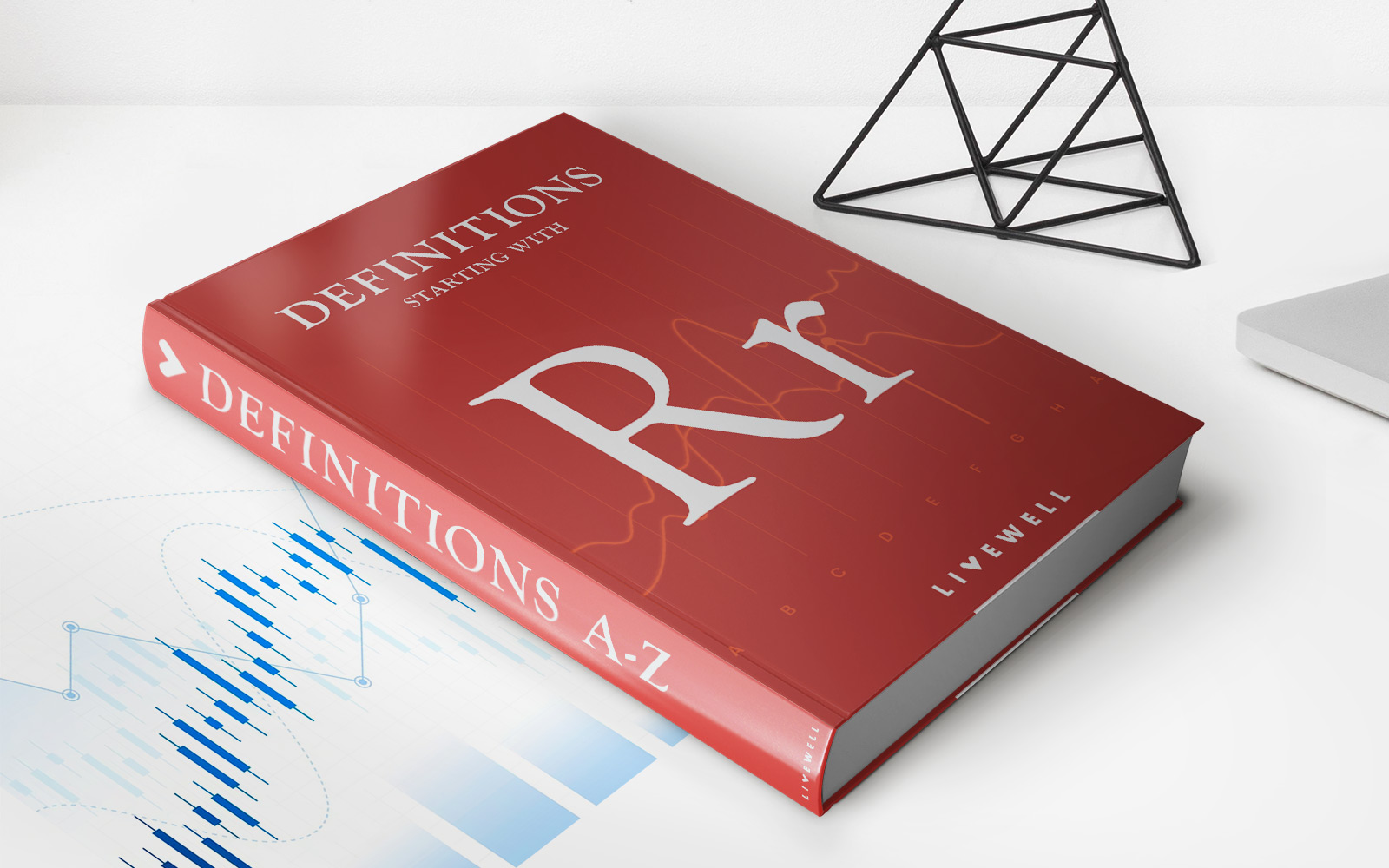

Finance
Why Is My Student Loan Interest Rate So High?
Published: February 16, 2024
Discover why your student loan interest rate is higher than expected and learn how to manage your finances effectively. Get expert insights on finance and student loans.
(Many of the links in this article redirect to a specific reviewed product. Your purchase of these products through affiliate links helps to generate commission for LiveWell, at no extra cost. Learn more)
Table of Contents
**
Introduction
**
Student loans are a common means of financing higher education, but many borrowers are perplexed by the seemingly high interest rates attached to these loans. Understanding the factors that contribute to these rates and how they compare across different loan types can empower borrowers to make informed decisions. This article delves into the nuances of student loan interest rates, shedding light on the underlying reasons for their perceived highness. By exploring the factors influencing these rates and offering strategies for managing them, borrowers can gain a clearer understanding of their financial obligations and make sound choices regarding their student loan debt.
Navigating the landscape of student loan interest rates can be daunting, especially for individuals new to the world of borrowing and lending. However, with the right knowledge and guidance, borrowers can gain a sense of control over their financial future. This article aims to demystify the concept of high student loan interest rates by dissecting the various elements that contribute to them. By the end, readers will have a comprehensive understanding of why student loan interest rates tend to be high and how they can effectively manage them.
Student loan interest rates are more than just numbers on a page; they represent the cost of borrowing and can have a significant impact on borrowers' financial well-being. By delving into the intricacies of these rates, borrowers can equip themselves with the knowledge needed to make informed decisions and effectively manage their student loan debt. Let's embark on a journey to unravel the mystery behind high student loan interest rates and discover actionable strategies for navigating this aspect of higher education financing.
**
Understanding Student Loan Interest Rates
**
Student loan interest rates represent the additional cost borrowers incur for the privilege of borrowing money to finance their education. These rates are calculated as a percentage of the total loan amount and can significantly impact the overall amount repaid over the life of the loan. Understanding the mechanics of student loan interest rates is crucial for borrowers seeking to manage their debt effectively.
Unlike other forms of debt, such as mortgages or car loans, student loan interest rates can be influenced by a variety of factors, including the type of loan, the borrower’s credit history, and the prevailing economic conditions. Federal student loans typically offer fixed interest rates, which remain constant throughout the life of the loan, providing borrowers with predictability and stability. In contrast, private student loans may feature fixed or variable interest rates, with the latter being subject to change based on market conditions.
It’s important for borrowers to grasp the distinction between the nominal interest rate and the annual percentage rate (APR). While the nominal rate represents the basic cost of borrowing, the APR provides a more comprehensive picture by incorporating additional fees and charges associated with the loan. By understanding both figures, borrowers can accurately assess the true cost of their student loans and make informed comparisons between different lending options.
Furthermore, comprehending the concept of capitalization is essential for borrowers aiming to mitigate the long-term impact of interest accrual. When interest capitalizes, it is added to the principal balance of the loan, resulting in a higher overall amount owed. This process can occur at various intervals, such as when a borrower exits their grace period or switches to a standard repayment plan. By proactively managing the capitalization of interest, borrowers can minimize the compounding effect and reduce the total amount repaid over the life of the loan.
**
Factors Affecting Student Loan Interest Rates
**
Several key factors influence the interest rates associated with student loans, shaping the financial landscape for borrowers. Understanding these factors is essential for individuals seeking to comprehend the rationale behind the seemingly high interest rates attached to their educational debt.
One of the primary determinants of student loan interest rates is the type of loan. Federal student loans, backed by the government, typically feature lower interest rates compared to private loans, which are offered by banks, credit unions, and online lenders. The federal government’s involvement in these loans allows for more favorable terms, making them an attractive option for many borrowers.
Another influential factor is the prevailing economic environment. Fluctuations in the national economy, including changes in the Federal Reserve’s monetary policy and shifts in market interest rates, can impact the cost of borrowing for students. During periods of economic expansion, interest rates may rise, leading to higher student loan interest rates. Conversely, in times of economic downturn, interest rates may decrease, offering some relief to borrowers.
Additionally, a borrower’s credit history plays a crucial role in determining the interest rates they qualify for, particularly in the realm of private student loans. Individuals with strong credit profiles are more likely to secure lower interest rates, reflecting the lender’s confidence in their ability to repay the borrowed funds. Conversely, borrowers with limited or adverse credit histories may face higher interest rates, as lenders perceive them to be higher-risk candidates.
Furthermore, the choice between fixed and variable interest rates can significantly impact the cost of borrowing. While fixed rates provide stability and predictability, variable rates are subject to change based on market conditions, potentially leading to fluctuations in the overall interest expense. Borrowers must carefully weigh the pros and cons of each option, considering their financial circumstances and risk tolerance.
By recognizing these influential factors, borrowers can gain a deeper understanding of the dynamics at play within the student loan landscape. Armed with this knowledge, they can make informed decisions regarding their borrowing options and develop effective strategies for managing their student loan interest rates.
**
Comparing Interest Rates Among Different Loan Types
**
When navigating the realm of student loans, borrowers are often confronted with a myriad of options, each accompanied by its own set of interest rates. Understanding the distinctions between these rates across different loan types is crucial for making well-informed borrowing decisions.
Federal student loans, backed by the U.S. Department of Education, typically offer fixed interest rates that are set by Congress. These rates are uniform across all borrowers and are not contingent on credit scores or financial histories. For the 2021-2022 academic year, the interest rates for federal direct loans for undergraduate students stand at 3.73%, while those for graduate students are slightly higher at 5.28%. Parent PLUS loans, available to parents of dependent undergraduate students, carry an interest rate of 6.28%. These rates provide a benchmark against which borrowers can evaluate the competitiveness of other loan options.
In contrast, private student loans, offered by financial institutions and online lenders, feature interest rates that are influenced by the borrower’s creditworthiness and the prevailing market conditions. As a result, these rates can vary significantly from one lender to another and are often higher than those offered for federal loans. Borrowers with strong credit profiles may qualify for more favorable terms, while those with limited or adverse credit histories may face higher interest rates and less favorable repayment terms.
When considering the choice between fixed and variable interest rates, borrowers must carefully assess their risk tolerance and financial circumstances. Fixed rates provide stability and predictability, allowing borrowers to plan their repayment with confidence. In contrast, variable rates are subject to change based on market conditions, potentially leading to fluctuations in the overall cost of borrowing. Borrowers must weigh the potential benefits of lower initial rates with the inherent risk of future increases.
Comparing interest rates among different loan types empowers borrowers to make informed decisions regarding their higher education financing. By evaluating the terms and conditions of federal and private student loans, as well as the nuances of fixed and variable interest rates, individuals can identify the most suitable borrowing options aligned with their financial goals and circumstances.
**
Strategies for Managing High Interest Rates
**
Managing high student loan interest rates requires a proactive approach and a deep understanding of the available strategies for mitigating the long-term financial impact. By implementing effective tactics, borrowers can navigate the challenges posed by high interest rates and work towards achieving financial stability.
One of the most impactful strategies for managing high interest rates is to explore opportunities for refinancing or consolidating student loans. Refinancing involves replacing existing loans with a new loan featuring a lower interest rate, potentially resulting in significant long-term savings. Borrowers with strong credit profiles and stable employment may qualify for more favorable refinancing terms, enabling them to reduce the overall cost of their debt.
Additionally, borrowers can consider making extra payments towards their student loans to accelerate the repayment process and minimize the accumulation of interest. By allocating additional funds towards the principal balance, borrowers can reduce the total amount of interest paid over the life of the loan, ultimately shortening the repayment period and achieving financial freedom sooner.
Exploring income-driven repayment plans offered for federal student loans can provide relief for borrowers facing high interest rates and financial hardship. These plans adjust monthly payments based on the borrower’s income and family size, ensuring that repayment remains manageable. Furthermore, any remaining balance at the end of the repayment term may be eligible for forgiveness, offering a viable path towards long-term debt relief.
Engaging in open communication with lenders and loan servicers is essential for borrowers grappling with high interest rates. By expressing their financial challenges and exploring available options, such as interest rate reductions or modified repayment plans, borrowers may find viable solutions tailored to their specific circumstances. Lenders are often willing to work with borrowers to find mutually beneficial arrangements that alleviate the burden of high interest rates.
Moreover, enhancing financial literacy and seeking guidance from reputable sources can empower borrowers to make informed decisions and develop effective strategies for managing high interest rates. Understanding the intricacies of student loan interest, repayment options, and financial planning equips borrowers with the knowledge needed to navigate the complexities of higher education financing.
By implementing these strategies and remaining proactive in their approach to managing high interest rates, borrowers can take control of their student loan debt and work towards achieving long-term financial well-being.
**
Conclusion
**
Navigating the realm of student loan interest rates can be a complex and often perplexing endeavor for borrowers. However, by delving into the intricacies of these rates and the factors influencing them, individuals can gain a comprehensive understanding of their financial obligations and make informed decisions regarding their higher education financing.
Student loan interest rates, while often perceived as high, are influenced by a myriad of factors, including the type of loan, prevailing economic conditions, and the borrower’s credit history. By recognizing these influential elements, borrowers can gain clarity on the rationale behind their interest rates and develop effective strategies for managing them.
Comparing interest rates among different loan types, such as federal and private student loans, empowers borrowers to identify the most favorable borrowing options aligned with their financial goals and circumstances. Additionally, understanding the nuances of fixed and variable interest rates enables borrowers to make informed decisions regarding the stability and predictability of their repayment terms.
Implementing proactive strategies for managing high interest rates, such as refinancing, making extra payments, exploring income-driven repayment plans, and seeking open communication with lenders, offers viable paths towards mitigating the long-term financial impact of student loan debt. By taking control of their financial future and enhancing their financial literacy, borrowers can navigate the complexities of student loan interest rates with confidence and resilience.
Ultimately, the journey to unravel the mystery behind high student loan interest rates equips borrowers with the knowledge and tools needed to make sound financial decisions and achieve long-term financial well-being. By embracing a proactive and informed approach to managing their debt, borrowers can pave the way towards a future unburdened by the weight of high interest rates, fostering financial stability and empowerment.
As borrowers continue their educational and professional endeavors, the understanding and management of student loan interest rates serve as pillars of financial resilience, guiding them towards a future defined by opportunity and prosperity.














